VERTICAL LANDSCAPE
JORGE MIÑO
Sep 16 — Nov 27, 2023
Main Gallery

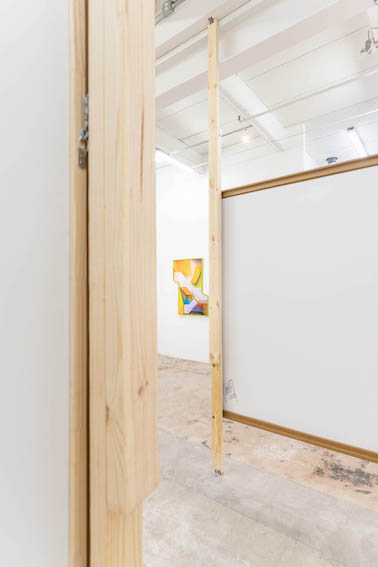

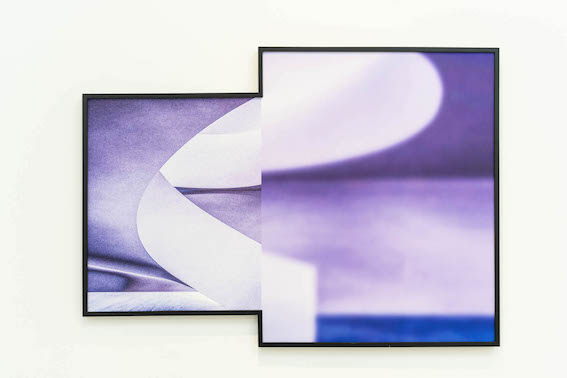



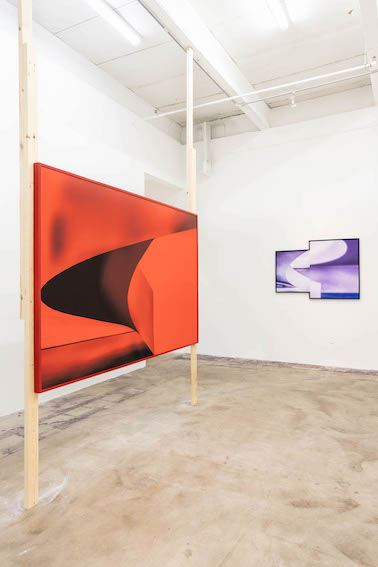









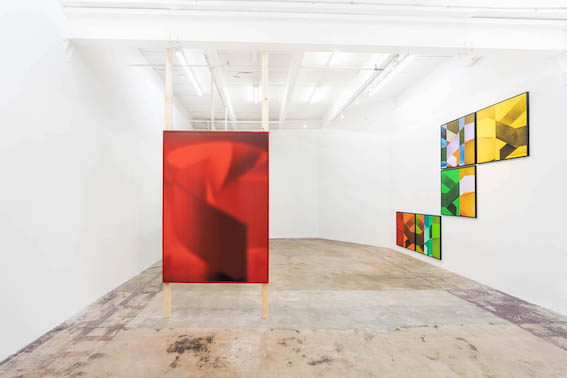


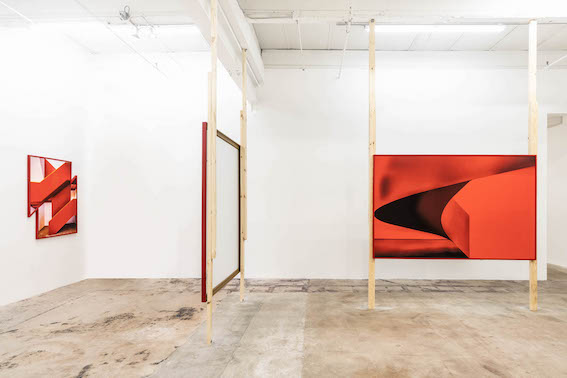





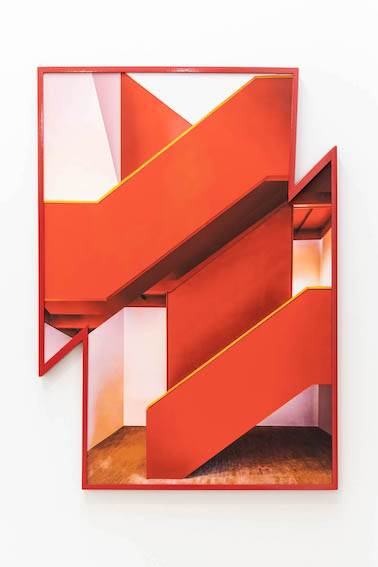
Poetic Transgressions: Spatial-Temporal Dislocations in the Work of Jorge Miño
Photography poses a duality between subject and object and subjectivity and objectivity that originates in an encounter with reality. Typically, the referent, or subject, adheres to the photograph, which allows it to create a seemingly objective replication of a specific place and time. As such, the immobility of the photographic image has become equated with death, vulnerability, and mortality. In contrast, the artist Jorge Miño transforms architectural photography, typically used to document a specific place, from a fixed image into a living object, thus returning the subjective experience to image. He does this by transgressing the very nature of photography. He uses his cellphone camera to capture certain architectural elements, and then alters them through various digital processes so that they become unrecognizable. His most recent works isolate, duplicate, overlap, stipple, and dilute architectural elements to produce a nearly abstract formal investigation. The destabilization and decontextualization of the image suspends space and time from its defined linear progression. Juxtaposed flat planes unfold in infinite directions rupturing the previous cohesive composition and revealing a plurality of space and multiplicity of form. Through this spatial-temporal dislocation, Miño transforms the photographic representation from a unified, memento mori into a poetic transgression in order to engender alternate experiences and understandings of reality.
The artist pushes his work beyond parameters of the photograph into the “poetic image,” which, according to Gastón Bachelard, emerges from a state of not-knowing and unfamiliarity by transcending the real.The poetic image lies at the crux of the conscious and unconscious and produces resonances and reverberations on the psyche. Like Miño’s work, it exists outside of linear time and reshapes the way we experience space in the present. In Cuadrado colores, the artist begins with an image of intersecting staircases that he transforms into pure geometric elements through the addition and subtraction of colors. The composition only has resonances of the familiar as it becomes an amalgamation of juxtaposed forms abutting one another on a seemingly flat surface. The planarity of a once three-dimensional form removes any specificity from the original object. Form becomes free from its referent and open to new significations and reverberations within viewer’s mind. As such, he or she is transported into a personal, poetic universe, open to experiential relationships with form and space, yet on the cusp of reality.
By situating the work on the boundary of the real and the unreal, Miño’s poetic image transgresses established systems of knowledge to construct a new method of seeing. This rupture occurs as the artist interrogates the framework of photography. For instance, in the aforementioned object, he continually pixelates the image causing vibrations or stains in each separate form that look like brushstrokes. In other works, such as Lila and Geometrico, Miño distresses the image to the point of it becoming granulated and blurry, giving the sensation of a grainy print or relief. The viewer thus questions what they are seeing—a photograph, a print, a relief, a painting or something else entirely. By printing each work onto a thick, velvet support, he creates a provocative visual texture that expands the photograph from its static nature. Indeed, each of Miño’s interventions are processes that most photographers tend to avoid in favor of sharp focus, clear images, and a defined place. Instead, the artist produces disturbances that transform incorrect technique into the desired effect.
Miño further dislocates the viewer’s spatio-temporal equilibrium by rupturing the traditional rectangular frame, a nod to the avant-garde art movements in Buenos Aires during the 1940s. Both Grupo Madí and Asociación Arte-Concreto-Invención (AACI) embraced the irregular or cut-out frame as a way to break from the representational “window-view” of painting. By rigorously structuring the frame according to the composition, an artwork became a physical, self-contained object integrated within the natural world, rather than merely representing it. Miño similarly liberates form in space by allowing his aesthetic interventions to determine the edges of his work. As such, form, line, color, and space, key elements in Concrete experimentation, move beyond the two dimensional support and into the surrounding space, thus breaking the cohesiveness of the artwork and transforming it into an actual, physical object with which the viewer interacts. In the case of Lila, Miño begins with an image of a spiral staircase and enlarges half of it to the point of becoming blurred and almost spectral. He places the fuzzy portion next to a distressed, grainy but clearer image of the other half of the staircase. By playing with the proportions and limits of the same image, the artist forces the viewer’s perception to constantly shift in and out of focus and jump between two and three dimensions. Space is thus destabilized and time is no longer contained within the frame as it unfolds onto the white gallery walls. The works hover between media, sitting at the nexus between genres and rupturing the normal discourse of photography.
This transgressive boundary crossing, where the inappropriate becomes appropriate and the visual space and time become uncertain, destabilizes the subject thus reconfiguring the aesthetic experience. As such, Miño’s work becomes an object existing within and outside of real time and space, allowing the viewers to take part in the unfolding of experiential and poetic universes.
By Rachel Mohl, Assistant curator of Latin American and Latino art Museum Fine Arts, Houston
BANDWŌ
PEPE LÓPEZ
Sep 16 — Nov 18, 2023
Project Room
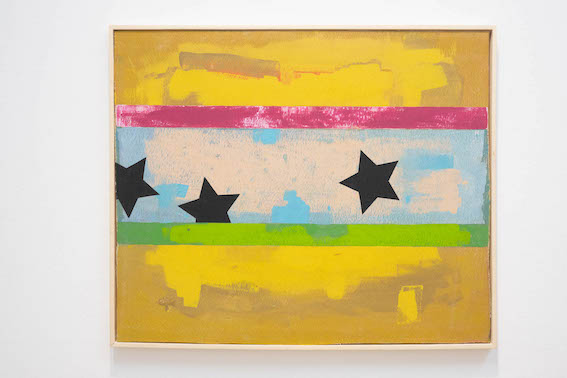
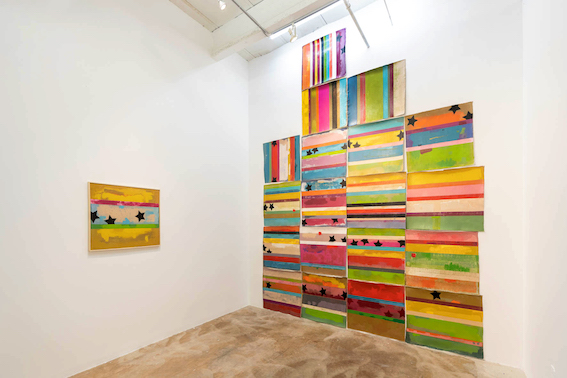

Artist Pepe López invites you to embark on a journey of meaningful colors. Derived from the Gothic term for the earliest form of a flag, "Bandwō" symbolizes the intricate interplay of colors, forms, and the complexities of human experience.
This compelling exhibition marks the conclusión of Pepe López’s Miami residency Project, hosted by Cerquone Gallery, which took place over the last two months.
In "Bandwō," the canvas becomes a canvas of life itself, where colors are not merely pigments but living entities that interact, clash, and harmonize. López's process involves layering and blending colors, painting, sanding, repainting, creating intricate textures that echo the complexities of human experience. The bands on the canvas are narratives of difference and unity, of division and fusion.These colors, never solid or even, evoke the fluidity of cultural boundaries and the ever-changing nature of our collective identity.
In "Bandwō," Lopez presents the canvas to become a flag for exploration, the artist invites the viewers to navigate the complex territory of human expression. The colors meld, blend, and transform into unexpected hues, creating a living tapestry of visual experiences. Within these painted realms, lines and bands are not mere divisions but bridges between worlds. The layers of colors, shifting and evolving, mirror the multifaceted nature of human existence. Just as each layer of paint contributes to the richness of the canvas, the layers of identity, shaped by cultural exchange, find their place in the intricate fabric of our global society. In the same way that paint coats build upon each other to form a cohesive whole, the construction of society is a process of layers, each representing a unique chapter in one's life journey. The interplay of colors on the canvas mirrors the interplay of cultures in the world, where differences can blend together to create something beautiful and profound.
Pepe López's "Bandwō" challenges viewers to contemplate color as a complex dynamics of integration. This exhibition is an artistic journey that invites reflection on the human condition, our shared journey in a world where diversity is our common ground.
Pepe López's work is a journey through a diverse trajectory of transformation. With a career spanning several decades, López has garnered international acclaim for his innovative and thought-provoking creations. Currently based in Paris, France, López continuously explores the spectrum of social dynamics, giving life to his perceptions and concepts through a prolific variety of artistic mediums.
López's artistic repertoire encompasses installations, objects, collages, paintings, performances, photography, tapestries, videos, and sculptures. His work is a testament to his unrelenting curiosity and artistic versatility.
Throughout his career, López has engaged in major multidisciplinary projects, collaborating with esteemed institutions such as the Puffin Foundation in New York City, the Bienal de la Habana in Cuba, the 21C Museum in Kansas City, USA, the Fitzrovia Chapel in London, UK, the Patricia Phelps de Cisneros Collection in NY, the Museo Amparo in Puebla, Mexico, and the MAD Museum in NY. He has also left his mark at iconic institutions like Sala Mendoza and the prestigious Museo de Bellas Artes, both located in Caracas, Venezuela.
Rooted in the rich traditions of Latin American abstraction, López's artistic practice transcends the boundaries of conventional artistic expression. His work delves into contemporary complexities, exploring themes that encompass violence, terrorism, consumerism, and identity politics. López Reus's ability to navigate these intricate subjects and translate them into compelling visual narratives is a testament to his mastery of the arts.
Pepe López Reus's work serves as a powerful mirror to our ever-evolving world, inviting viewers to engage in profound contemplation and reflection. His art not only captures the essence of our time but also challenges us to question and explore the intricate tapestry of human existence through the lens of artistic innovation.


